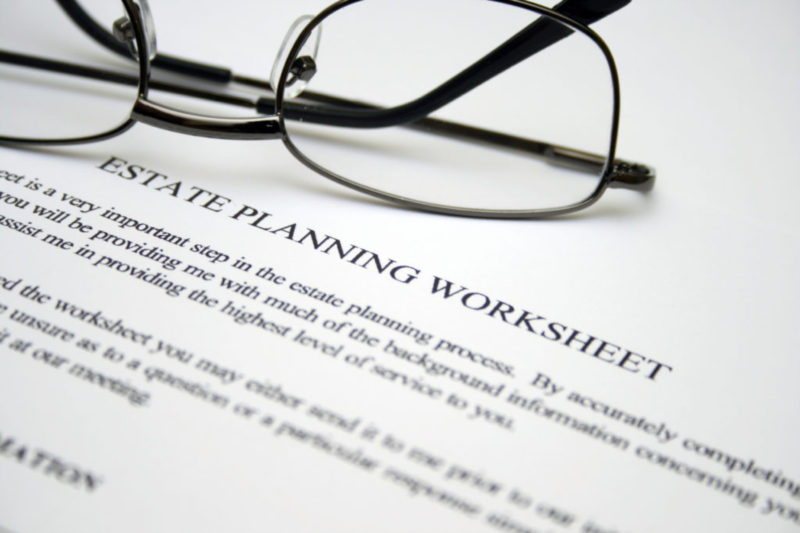Estate Accounts: How to be a Better Fiduciary
Being named as executor on behalf of a friend’s or loved one’s estate can be both challenging and fulfilling. On one hand you’re dealing with the grief and shock of losing someone close. On the other, you’re being entrusted with a responsibility given to you because someone had faith in your good judgment and integrity. Making sure that a person’s estate is handled according to the person’s final wishes is a serious matter but one that also allows you to pay respect to your loved one’s priorities and care for beneficiaries. As executor you represent the estate personally, making you its ‘personal representative.’ An executor is also a fiduciary, which means you must prioritize the best interests of the estate and its beneficiaries ahead of your own.
It can be an emotional time and you may be feeling pressure to make decisions on matters about which you may know very little. Importantly, do not rush. There’s an established legal procedure, with deadlines that you must meet in order to properly close an estate. Depending on whether the estate is held in trust or handled in probate court, it can take as long as 36 months. When you need an expert – and, remember, there is personal liability associated with serving as an executor – you can even use a firm like Court Investment Services to advise on financial matters.
Court Investment Services can help you fulfill your responsibility to safeguard the assets that are entrusted to you, and serve as an investment manager to protect, preserve and enhance the long-term value of estate accounts. California executors managing complex estates also can seek professional assistance from the Professional Fiduciary Association of California at https://pfac-pro.org.
While laws vary from state to state, here is a basic estate settlement timeline.
Settlement Timeline
Months 1 ––> 3
- Safeguard personal effects. All property must be secured and held until you settle the estate.
- Collect all documents and read the will. You may need copies of: death certificate, birth certificate, marriage certificate, property titles, insurance policies, and brokerage, bank, and retirement account statements.
- Assess and insure items of value. Work with appraisers and insurers to determine the value of items and protect them during the settlement process.
- Record the probate petition and will. Even if the estate is held in trust, you’re still required to file the will in probate court and officially be named as the estate’s executor.
- Close personal accounts and memberships. Keep an eye out for accounts that are subscribed to automatic bill pay and cancel those that are no longer needed.
Months 3 ––> 6
- Collect financial assets. Retirement accounts, savings accounts, stakes in business partnerships – all financial interests should be identified and moved into the estate account.
- Evaluate the estate’s short-term cash requirements. Determine how much cash on hand the account will need during the probate or settlement process. These could be legal, utility, maintenance or insurance premiums. Keep a sufficient amount of liquid capital or sell some items to pay for contingencies.
Months 6 ––> 9
- Locate assets and determine date-of-death values. This means doing a thorough inventory of all items of value and quantifying the estate’s total net worth.
- Allocate personal property to beneficiaries. Heirs may be pressuring you to begin distributing assets. While you can’t settle all inheritances at this time, you can relieve some of the pressure by distributing tangible, personal effects – many of which have emotional value.
- Record estate probate inventory, documents and assets. Create an itemized inventory of any property, bank accounts, real estate and debts. Submit this to the court.
- Discharge estate tax lien. The government issues an estate tax lien against all real assets held in an estate. Before you can transfer or liquidate those assets, you need to get the lien released.
Months 9 ––> 12
File tax forms and make partial distributions. Pertinent forms can include:
- Federal Estate Tax Form 706
- State estate taxes
- U.S. Income Tax Return for Estates and Trusts Form 1041
- U.S. Gift (and Generation-Skipping Transfer) Tax Return Form 709
- Information Regarding Beneficiaries Acquiring Property from a Decedent Form 8971
- Final Individual Income Taxes Form 1040
Months 12 ––> 18
- Settle outstanding expenses. As you near the end of the process, it’s time to pay any remaining creditors or debts that the estate maintains or has incurred.
- Prepare and file final accounting. This involves creating a detailed report that summarizes how you’re handling and disposing of the estate’s assets and obligations.
- Obtain estate-tax closing letter(s). The government issues this form to verify that it has reviewed and accepted an estate’s income tax return, and is generally required before you can settle the estate.
Months 18 ––> 36
- Disburse contingency reserves after settling all financial obligations. Once you’re certain you’ve paid all expenses, you can liquidate the reserve account.
- Distribute final assets to beneficiaries. Now that you’ve done all this, it’s time to issue final payments to all interested parties.
- Close the estate and petition for discharge as personal representative. Finally, after all debts, expenses and taxes have been accounted for, you may petition the court to be released as executor, including any legal liability.
Learn more about estate account settlement
This is a brief overview of the estate settlement timeline. If you have questions about managing assets held in an estate account, please contact us at (800) 880-2760 or contact@courtinvestmentservices.com. We’re here to help!

